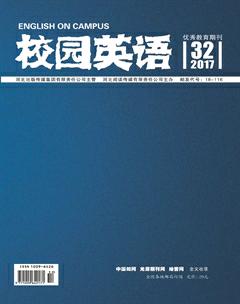Discussion on age factor Influencing second language Acquisition
张明月
【Abstract】Second language acquisition is a new field of linguistic research. In the sociology, physiology, psychology, linguistics and other aspects of the research, the younger the child is, the better the effect of second language acquisition they can get. Further exploration of the age factor in second language acquisition is conducive to educators to place importance on the second language teaching.
【Key words】second language acquisition; age; Critical Period Hypothesis
1. Age and Second Language Acquisition
Stern said: In the learning factors, and the second language learning-related age has been the most controversial language teaching theory of a problem. Whether the answer is, for the school system of language teaching organization have far-reaching significance.
The representative view is the Critical Period Hypothesis of Lenneberg. He believes that:before adolescence, the malleability of the brain is better than adults, so that the second language is relatively easy to learn, and adults brain development is fully mature, so that it is difficult for adults to learn a second language. While others put forward different views, Krashen argued that older children had a faster language acquisition than younger children at an early stage in vocabulary and syntactic learning. Adults can also learn a foreign language. If they can use foreign language when they learn it, adults learn faster than children, older children than younger children learn faster.
2. Childrens Advantage of Second Language Acquisition
2.1 Physiology advantages
Language abilitys production, development, and degradation are restricted by physical development. Lenneberg has also explained this from a clinical experience of medicine that the human brain lateralization starts from the age of two, and finish at about 11 to 19 years of age. It is generally believed that young people are more sensitive to hearing, and have stronger ability to imitate. On the contrary, after puberty, brain elasticity and language stimulus to the brain get weakened, innovation and flexibility slowly decline; language input becomes difficult, which results in obstacles to second language acquisition.
2.2 Motivation advantage
There are two kinds of motivation to learn the second language:one is instrumental motivation which means learning the language as a tool to learn; the other is integrative motivation, such as to participate in the activities of the second language. It has been proved that the integrative motivation is often more positive, the language can also learned better.endprint
2.3 Cognitive advantage
Children often experience two stages in the development of language learning. The first stage occurred before 4 ~ 6 years old. When 6 ~ 7 years old, they went into the second phase, their abilities of cognitive are further improved, which enables them to to further strengthen the logic of output language. Because of the mastery of the mother tongue, the adult is willing to associate the second language with the mother tongue. If the second language is simply and roughly compared with mother language, the second language acquisition will be interfered a lot by the mother tongue on many aspects.
2.4 Emotion advantage
With people getting older, the emotional state becomes richer and more complex; it will be more negative to the second language acquisition. To master a new language, we need to build a new language mode. Because children are not deep-rooted in their mother tongue, it is much easier to construct a new model. Children can be more vividly perceived different language forms through various media such as games, fairy tales, songs and animation. Because of fear of making mistake, adults are ashamed to express their point of view easily. Adults also lack the inherent flexibility and creativity to turn the second language learning into a natural acquisition process.
3. Conclusion
Adult learners and children do not have the same process of second language acquisition. Language teachers should be based on the characteristics of the development of children to set language learning plot. For the adult learners, they should be more focused on the form of language and systematic grammar.
References:
[1]Stern,H.H.,Fundamental Concepts of Language Teaching[M].Oxford:Oxford University Press,1983.
[2]Krashen,S.D.,Long,MA,and Scarcella,R.C,Age,rate,and eventual attainment in second language acquisition.TESOLQuarterly, 13,573-582.1979.
[3]Lenneberg,E.H.,Biological Foundations of Language[M].New York:JohnWiley,1967.
[4]顏奕.Age and Age- related Factors in Second Language Acquisition[J].北京语言大学,2006.
[5]张浩.Age Factor in Second Language Acquisition[J].合肥工业大学,2014.
[6]张娜.Effects of Age on Second Language Acquisition[J].内蒙古科技大学,2013.endprint

